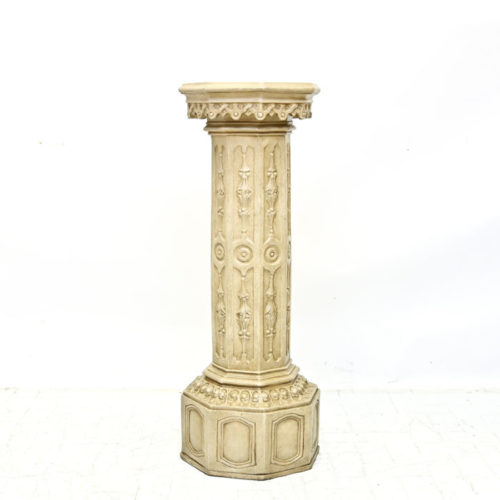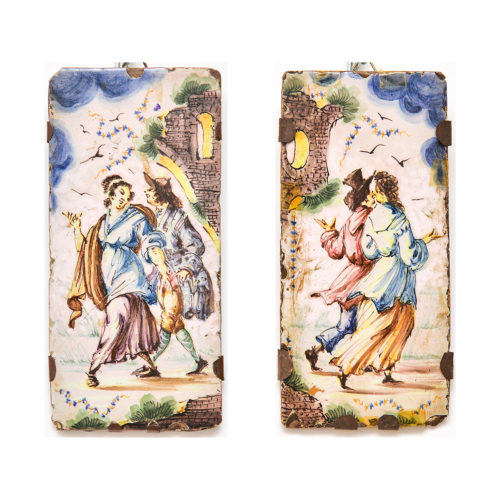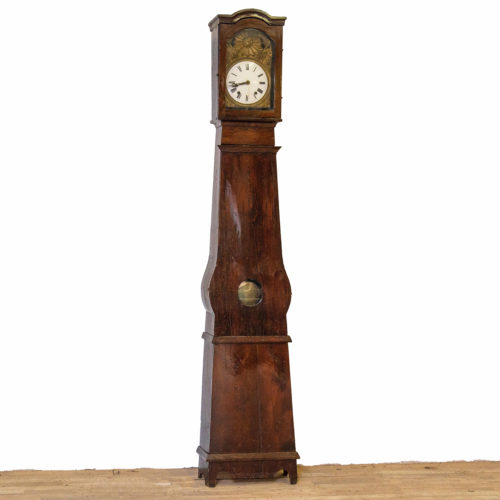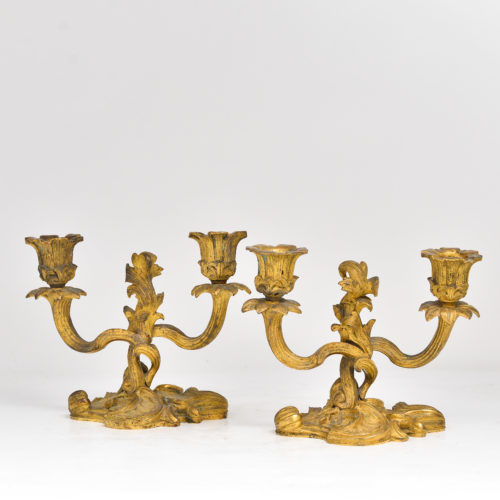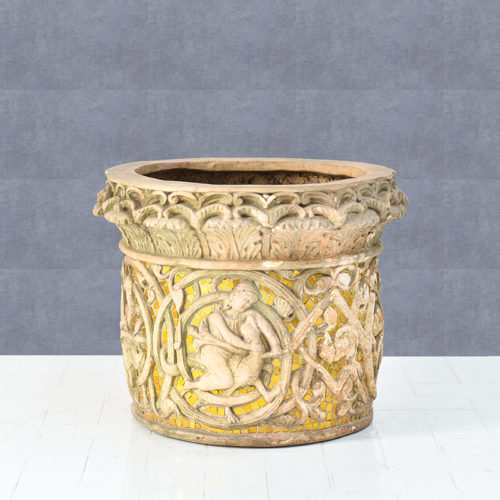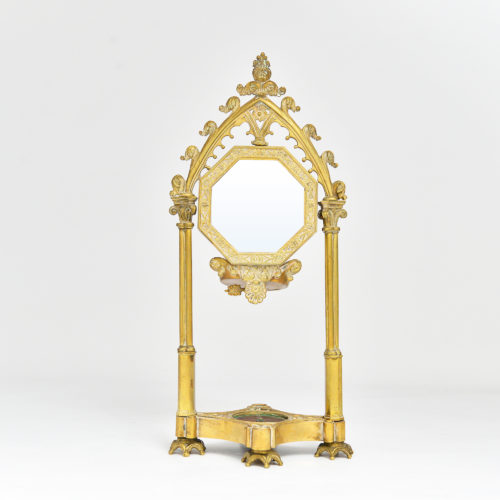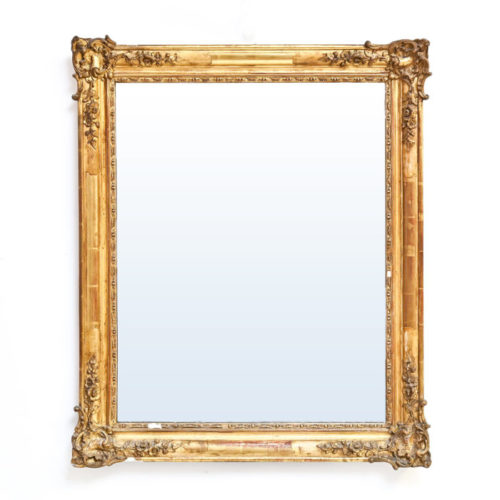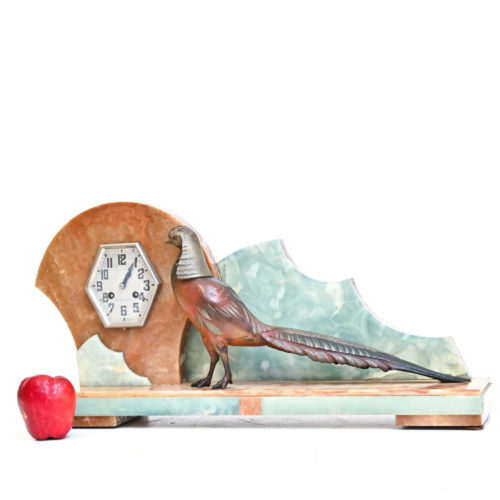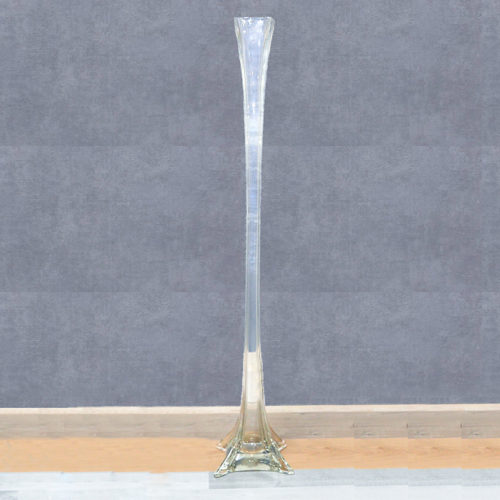Separé / Screen late nineteenth century, in walnut, panels composed of turned inserts embedded together to create a fascinating geometric motif dating back to around 1880, has some shortcomings.
-
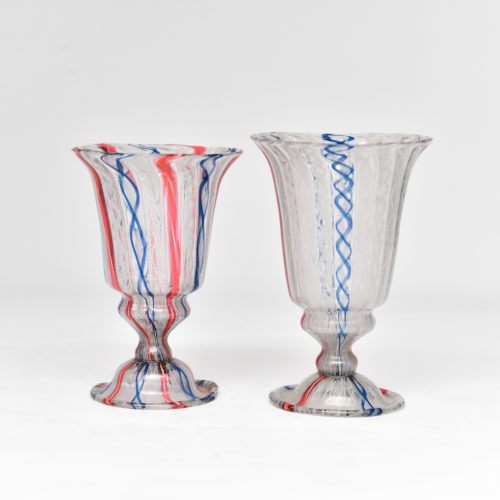 Pair of Murano glass goblets dating back to the second half of the 19th century. Colorless glass, bell-shaped cup with ribbed and alternating ribbed bands, with cobalt blue bands and filigree lattimo bands. One completely intact and the other has a rupture at the base.Period: Second half of the 19th century Measurements: H 13 x Ø 8,5 cm
Pair of Murano glass goblets dating back to the second half of the 19th century. Colorless glass, bell-shaped cup with ribbed and alternating ribbed bands, with cobalt blue bands and filigree lattimo bands. One completely intact and the other has a rupture at the base.Period: Second half of the 19th century Measurements: H 13 x Ø 8,5 cm -
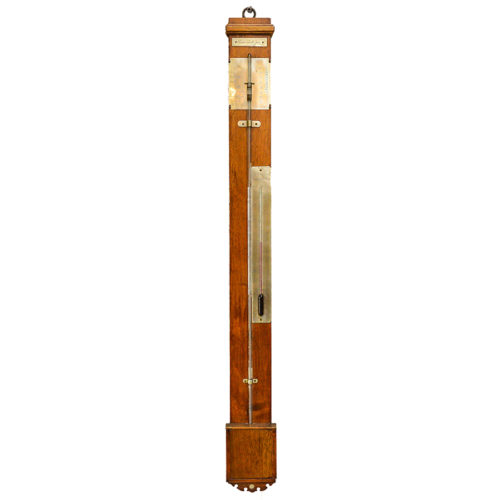 Period: 19th century Measures: H 96 x L 11 x P 8 cmAncient mercury barometer mounted on a mahogany table signed Cesare Vaselli from the early 19th century. This ancient measuring instrument consists of a glass tube filled with mercury and turned with the open side downwards inside a glass bulb containing other mercury. The mercury column tends to descend into the bulb leaving the void behind it: by measuring the height of the column the atmospheric pressure can be calculated. Mercury was already known in ancient times to the Chinese and Hindus; it was found in Egyptian tombs dated around 1500 BC. from 500 BC. begins its use as an amalgam for other metals. The ancient Greeks used it as a pigment for paintings, and the Romans used it in cosmetics. According to medieval alchemists it was the material from which everything else had been formed, and they thought that once hardened it would turn into gold.
Period: 19th century Measures: H 96 x L 11 x P 8 cmAncient mercury barometer mounted on a mahogany table signed Cesare Vaselli from the early 19th century. This ancient measuring instrument consists of a glass tube filled with mercury and turned with the open side downwards inside a glass bulb containing other mercury. The mercury column tends to descend into the bulb leaving the void behind it: by measuring the height of the column the atmospheric pressure can be calculated. Mercury was already known in ancient times to the Chinese and Hindus; it was found in Egyptian tombs dated around 1500 BC. from 500 BC. begins its use as an amalgam for other metals. The ancient Greeks used it as a pigment for paintings, and the Romans used it in cosmetics. According to medieval alchemists it was the material from which everything else had been formed, and they thought that once hardened it would turn into gold.

